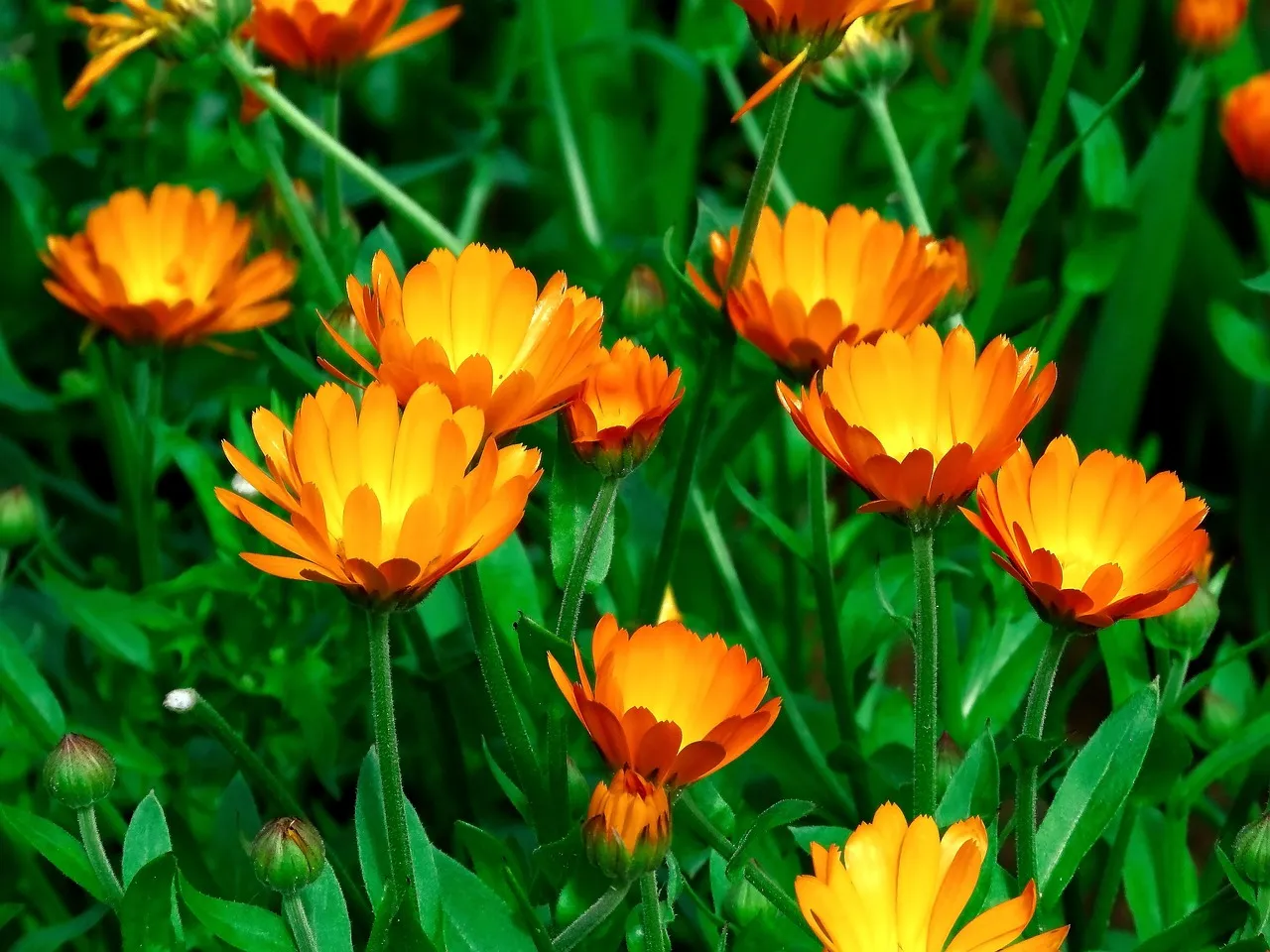Welcome to our blog post on “Growing Calendula Plants on Your Balcony: Tips and Tricks!” Calendula, with its vibrant and cheerful blooms, is not only a delightful addition to any balcony garden but also a powerhouse of benefits. Whether you’re a seasoned gardener or just starting your green thumb journey, this post aims to provide you with valuable insights and practical tips to help you successfully cultivate calendula on your balcony. We’ll explore everything from choosing the right varieties and understanding optimal growing conditions to essential techniques for watering, feeding, and caring for your plants. Additionally, we’ll delve into the creative uses of calendula, troubleshooting common issues, and even showcasing your balcony garden through styling and photography. Get ready to embark on a rewarding and colorful journey as we dive into the world of growing calendula plants on your balcony. Let’s nurture nature’s beauty right outside your doorstep!
Types of Calendula available
When it comes to growing calendula plants on your balcony, there are several different types and varieties to choose from. Each type has its unique characteristics, including flower color, size, and growth habit. In this blog subsection, we will explore some popular types of calendula that you can consider for your balcony garden. Let’s dive in and discover the beautiful world of calendula varieties.
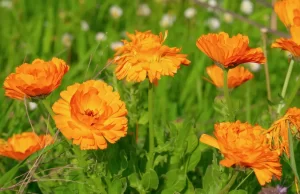
Calendula officinalis:
Calendula officinalis, also known as pot marigold, is the most common and widely cultivated type of calendula. It features vibrant yellow or orange flowers and can reach a height of around 12 to 24 inches. This variety is known for its medicinal properties and is often used in herbal remedies and skincare products.
Calendula ‘Bon Bon’ series:
The ‘Bon Bon’ series is a compact and dwarf variety of calendula, perfect for smaller balcony spaces. It produces fully double flowers in shades of orange, yellow, and apricot. The ‘Bon Bon’ series is known for its prolific blooming and is a great choice for adding a burst of color to your balcony garden.
Calendula ‘Pacific Beauty’ series:
The ‘Pacific Beauty’ series is another popular choice for balcony gardeners. This variety produces large, semi-double flowers in a wide range of colors, including yellow, orange, and apricot. With its long flowering period and compact growth habit, ‘Pacific Beauty’ is a great option for continuous blooms throughout the season.
Calendula ‘Snow Princess’:
If you fancy a unique twist from the traditional perpetual calendar, the ‘Snow Princess’ variety might catch your eye. This variety features delicate cream-white flowers that add an elegant touch to your balcony garden. The ‘snow princess’ calendula is a great choice for creating contrast and visual interest when combined with other colorful varieties. .
Calendula ‘Indian Prince’:
Consider planting ‘Indian Prince’ calendula for a more picturesque look on your balcony and captivating. This cultivar has gorgeous petals that are orange-red with black cores, giving it a brash and startling look. Indian Prince is a great option for bringing some intensity and brightness to your balcony garden..
Calendula ‘Radio’:
The ‘Radio’ variety of calendula is a charming option with unique two-tone flowers. Its petals are primarily orange, with contrasting dark red or mahogany tips. ‘Radio’ calendula adds a playful and eye-catching element to your balcony garden, making it a favorite among flower enthusiasts.
Calendula ‘Strawberry Blonde’:
If you’re looking for a truly captivating and unusual calendula variety, ‘Strawberry Blonde’ is worth considering. This type features stunning flowers with peachy-pink petals that gradually fade to a creamy yellow center. ‘Strawberry Blonde’ is a conversation starter and can be a focal point in your balcony garden.
These are just a few of the many calendula varieties available to balcony gardeners. Each type offers its own unique beauty and charm, allowing you to create a personalized and visually appealing garden space. Consider the colors, growth habits, and overall aesthetic you desire when choosing the perfect calendula types for your balcony. With the right selection, you can enjoy a stunning display of colorful and vibrant calendula blooms right at your doorstep.
Choosing the Right Calendula Varieties for Your Balcony Garden
The appropriate types must be chosen while planting calendula plants on your balcony if you want a productive and colorful garden. With so many alternatives, it’s crucial to take your tastes into account as well as elements like space and sunshine. The “Pacific Beauty” type, which is well-known for its enormous, beautiful flowers that vary from vivid orange to soft yellow, is one of the most well-liked options. The “Bon Bon Mix,” which provides a beautiful assortment of petite, double-flowered blossoms in various colours, is an additional choice. The “Strawberry Blonde” variant stands out with its alluring fusion of peach, apricot, and pink tones if you’re searching for a novel twist. Choosing the ideal calendula kinds will, in the end, not only add beauty to your balcony garden but also create a peaceful and welcoming environment for you to enjoy..
Understanding the Ideal Growing Conditions for Calendula on a Balcony
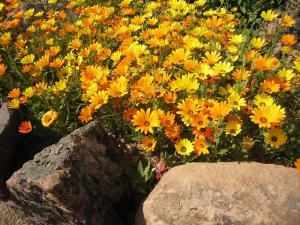
When it comes to successfully growing calendula plants on your balcony, understanding the ideal growing conditions is key. Calendula thrives in areas with full sun exposure, so it’s important to choose a balcony location that receives at least 6 hours of direct sunlight per day. Additionally, organically rich, well-draining soil is preferred for calendula.. You can achieve this by using a combination of potting soil and compost or by creating a custom soil mix. Adequate moisture is essential for calendula’s growth, but it’s important to strike a balance to avoid waterlogged roots. Regular watering is necessary, ensuring that the soil is evenly moist but not overly saturated. Balcony gardeners should also be mindful of temperature fluctuations and protect their plants during extreme heat or cold. By providing the ideal growing conditions of sunlight, well-draining soil, appropriate moisture levels, and temperature considerations, you can ensure healthy and thriving calendula plants on your balcony.
Preparing Your Balcony for Calendula Planting: Soil, Containers, and Drainage
Before planting calendula on your balcony, proper preparation is essential to create an optimal environment for their growth. Start by choosing the right containers that provide enough space for the plants to spread their roots. Avoid waterlogging by using containers with drainage holes to avoid root rot. Next, prepare the soil by using a well-draining potting mix that is enriched with organic matter. This will ensure that the soil retains enough moisture without becoming overly saturated. It’s also beneficial to mix in some perlite or sand to enhance the soil’s drainage capacity. Prior to planting, ensure that your chosen containers and balcony area receive ample sunlight. Calendula thrives in full sun, so a spot that receives at least 6 hours of direct sunlight per day is ideal. Lastly, be mindful of the balcony’s microclimate and potential wind exposure. Providing windbreaks, such as trellises or barriers, can protect your calendula plants from strong gusts that may cause damage. By taking these preparatory steps, you’ll create a suitable environment for your calendula plants to flourish on your balcony.
The Importance of Sunlight for Thriving Calendula Plants on Your Balcony
When it comes to growing calendula plants on your balcony, understanding the importance of sunlight is crucial for their thriving growth. Calendula is a sun-loving plant that requires ample sunlight to flourish. It is recommended to choose a balcony location that receives at least 6 hours of direct sunlight per day. Photosynthesis, the process by which plants convert sunlight into energy, depends on sunlight. Adequate exposure to sunlight promotes strong and sturdy growth, vibrant blooms, and enhances the overall health of calendula plants. Insufficient sunlight can lead to weak and leggy growth, reduced flower production, and an increased susceptibility to pests and diseases. If your balcony doesn’t receive enough direct sunlight, consider using reflective surfaces, such as mirrors or light-colored walls, to redirect and maximize the available sunlight. Additionally, regularly monitor the sun patterns throughout the day and adjust the placement of your calendula containers accordingly to ensure they receive optimal sunlight. By prioritizing sunlight for your balcony-grown calendula plants, you’ll create an environment conducive to their thriving growth and vibrant blooms.
Watering Techniques for Calendula: Finding the Perfect Balance
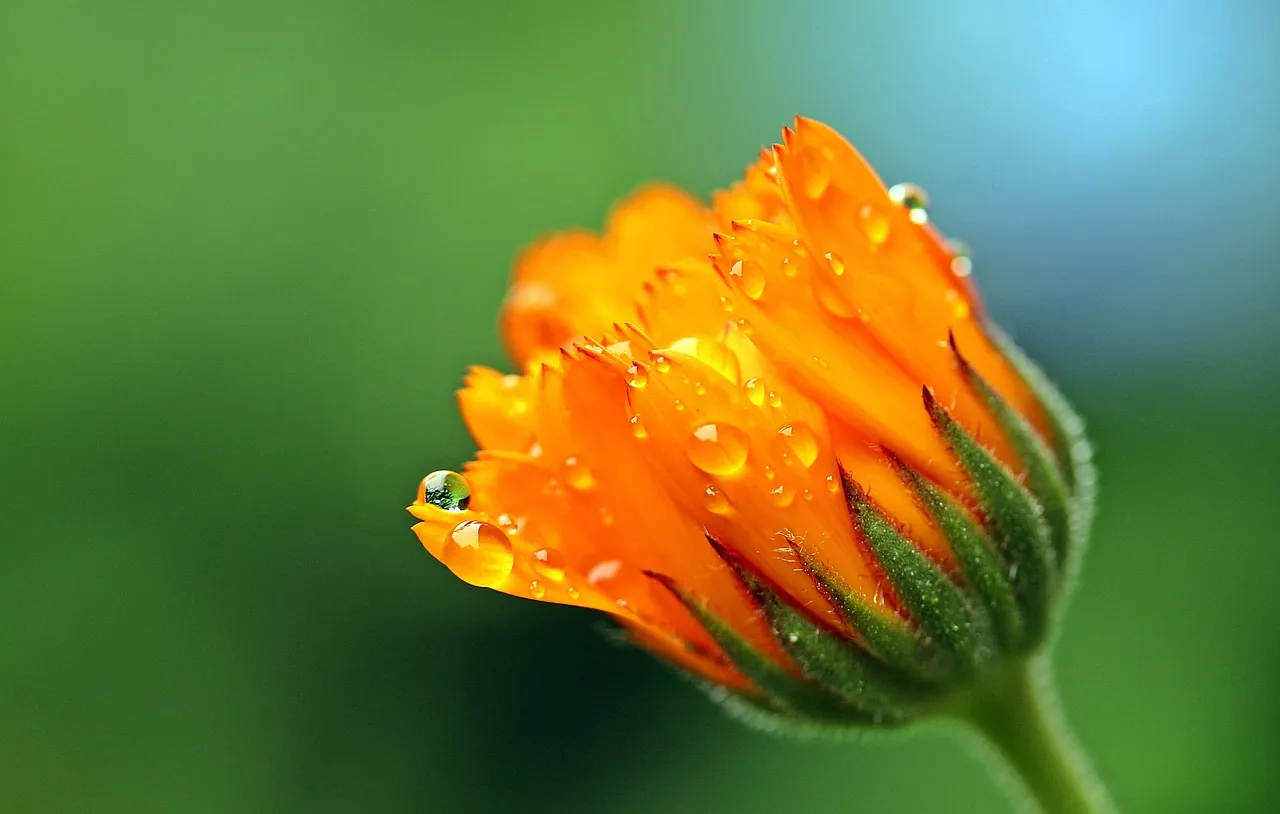
Watering calendula plants on your balcony requires finding the perfect balance to ensure their health and vitality. Calendula plants prefer consistent moisture, but overwatering can lead to root rot and other issues. The secret is to water deeply but sparingly, giving the soil a chance to somewhat dry up in between usages. Check the soil`s top inch with your finger before watering. When the soil feels dry, it’s time to water. When watering, keep the entire base of the plant moist. Ensure that the water reaches the root level by watering at the base of the plant rather than overhead. This helps prevent fungal diseases and ensures efficient water uptake. Avoid excessive watering or allowing the plants to sit in standing water, as this can cause root suffocation and diseases. It’s essential to strike a balance and adjust the watering frequency based on environmental factors like temperature and humidity. During hot and dry periods, you may need to water more frequently, whereas cooler and rainy conditions may require less frequent watering. By practicing proper watering techniques and finding the perfect balance, you’ll provide your balcony-grown calendula plants with the ideal moisture levels they need to thrive.
Feeding and Fertilizing Calendula on Your Balcony: Best Practices
Feeding and fertilizing calendula plants on your balcony is essential for promoting healthy growth and abundant blooms. One of the best practices for feeding calendula is to incorporate organic matter into the soil before planting. This can be achieved by mixing compost or well-rotted manure into the potting mix. Organic matter not only provides essential nutrients but also improves soil structure and water retention. During the growing season, it’s beneficial to use a balanced, slow-release fertilizer specifically formulated for flowering plants. Adhere the application rates and schedule recommendations provided by the manufacturer.. Applying a liquid fertilizer diluted in water can also be done every few weeks to provide a nutrient boost. When feeding calendula, it’s important not to over-fertilize, as excessive nutrients can lead to excessive foliage growth and reduced flowering. Always water the plants thoroughly before applying fertilizer to prevent root burn. Additionally, regularly monitor the plants for any signs of nutrient deficiencies or excesses and adjust the feeding regimen accordingly. By adhering to these best practices for feeding and fertilizing, you’ll ensure that your balcony-grown calendula plants receive the nutrients they need to thrive and produce beautiful, vibrant blooms.
Planting Calendula Seeds vs. Transplants: Pros and Cons for Balcony Gardeners
When it comes to growing calendula plants on your balcony, you have the option to start from seeds or use transplants. Both methods have their own set of pros and cons for balcony gardeners to consider. Planting calendula seeds allows for a wider variety of options, as you can choose from numerous cultivars and save seeds from your favorite flowers for future planting. It’s a cost-effective approach and provides a sense of fulfillment watching the seeds germinate and grow. However, growing from seeds requires patience and time as they need to be sown indoors or in a protected area before being transplanted. On the other hand, using transplants provides instant gratification, as you can skip the germination process and start with established plants. This method is convenient for those who want to see quicker results. However, transplants may have limited availability in terms of variety, and they can be more expensive compared to seeds. It’s crucial to choose healthy transplants and ensure a smooth transition when transplanting them to your balcony containers. Ultimately, the choice between planting calendula seeds or using transplants depends on your preferences, time availability, and desired timeline for blooms. Whichever method you choose, with proper care and attention, you can enjoy the vibrant beauty of calendula in your balcony garden.
Pruning and Deadheading Calendula: Promoting Continuous Blooms
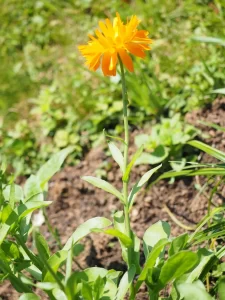
Pruning and deadheading calendula plants on your balcony is an effective way to promote continuous blooms and maintain the overall health and appearance of your plants. Regular pruning helps to encourage bushier growth and prevents the plants from becoming leggy. It’s best to start pruning calendula when they reach a height of around 6 to 8 inches. Use clean and sharp pruning shears to trim back the stems, cutting just above a set of healthy leaves or branching point. This will stimulate new growth and result in a more compact and robust plant. Deadheading, the process of removing spent flowers, is equally important. By removing faded blooms, you prevent the plant from diverting energy towards seed production and instead direct it towards new flower development. Deadheading also improves the overall aesthetic appeal of the plant by keeping it tidy and free from withered blooms. Regularly inspect your calendula plants and remove any spent flowers by pinching them off or snipping them at the base of the stem. This practice encourages the continuous production of fresh blooms throughout the growing season. Remember to dispose of the pruned or deadheaded materials properly to prevent the spread of pests or diseases. By incorporating pruning and deadheading into your calendula care routine, you’ll enjoy an abundance of beautiful and vibrant blooms on your balcony throughout the season.
Dealing with Common Pests and Diseases: Calendula Pest Management on a Balcony
Dealing with common pests and diseases is an essential part of calendula pest management on your balcony. While calendula is generally resilient, it can still be susceptible to certain pests and diseases. One common pest is aphids, tiny insects that feed on the sap of plants. To combat aphids, you can try using a gentle insecticidal soap or a strong jet of water to dislodge them from the plant. Another potential pest is spider mites, which are tiny arachnids that suck the juices from leaves, causing discoloration and webbing. Regularly spraying the plants with water and maintaining proper humidity levels can help deter spider mites. Diseases like powdery mildew and fungal leaf spots can also affect calendula. To prevent these diseases, avoid overhead watering, provide adequate air circulation, and space the plants properly to avoid overcrowding. If necessary, you can use organic fungicides to control the spread of fungal diseases. Additionally, practicing good garden hygiene, such as removing dead leaves and debris, can help prevent pest and disease issues. Regularly inspect your calendula plants for any signs of pests or diseases and take prompt action to prevent their spread. By implementing proper pest management strategies, you can ensure that your balcony-grown calendula plants remain healthy, vibrant, and free from common pests and diseases.
Companion Planting with Calendula: Maximizing Benefits in Your Balcony Garden
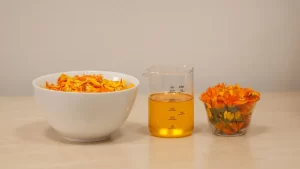
Companion planting with calendula in your balcony garden is a smart strategy that allows you to maximize the benefits of this versatile plant. Calendula is known for its pest-repellent properties and its ability to attract beneficial insects, making it an excellent companion for a variety of plants. One popular companion for calendula is tomatoes, as the bright blooms of calendula can help attract pollinators to improve tomato fruit set. Additionally, calendula’s strong scent is believed to deter certain pests that commonly affect tomatoes. Another beneficial companion is herbs, such as basil and parsley, which can help repel insects and provide an aromatic backdrop to your garden. Calendula can also be paired with other flowering plants like marigolds and lavender to create a visually appealing and beneficial mix. The vibrant colors and cheerful blooms of calendula can enhance the overall aesthetics of your balcony garden. Furthermore, calendula can serve as a sacrificial plant, attracting pests away from more valuable crops. By incorporating calendula as a companion plant, you can create a thriving and harmonious ecosystem on your balcony, maximizing the benefits for both your calendula and other plants.
Harvesting and Preserving Calendula Flowers: Enjoying the Fruits of Your Labor
Harvesting and preserving calendula flowers is a rewarding part of growing calendula plants on your balcony. When the flowers are in full bloom and at their peak, it’s time to harvest them for various uses. To harvest calendula flowers, choose a dry and sunny day, preferably in the morning when the dew has evaporated. Gently pluck the flowers from the plant, being careful not to damage the stems or surrounding foliage. Select flowers that are fully open with vibrant colors and no signs of wilting or browning. Once harvested, you can use calendula flowers in a multitude of ways. They can be dried by spreading them out in a single layer on a clean, dry surface in a well-ventilated area away from direct sunlight. After a couple of weeks, the flowers should be fully dried and can be stored in airtight containers for later use. Dried calendula flowers are excellent for making herbal teas, infused oils, or incorporating into homemade skincare products. If you prefer to use fresh calendula flowers, they can be added to salads or used as a colorful garnish for culinary creations. The process of harvesting and preserving calendula flowers allows you to enjoy the fruits of your labor throughout the year. By harvesting at the right time and using proper preservation methods, you can fully appreciate the beauty and versatility of calendula in various aspects of your life.
Creative Uses for Calendula Flowers: DIY Balcony Garden Beauty Products
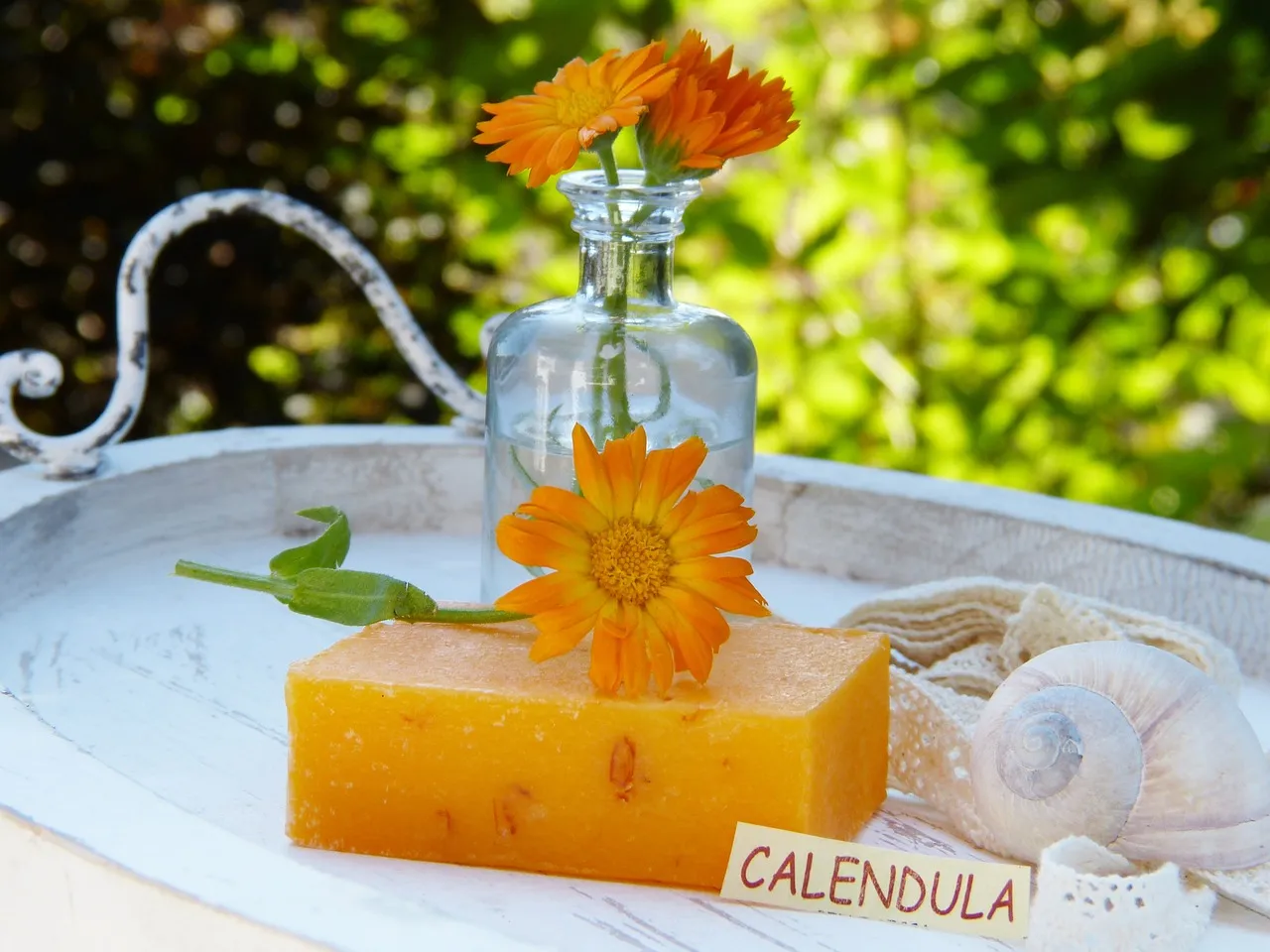
Creative uses for calendula flowers extend beyond their beauty in the garden. You can harness the natural benefits of calendula by incorporating them into DIY beauty products for your balcony garden. Calendula-infused oil can be created by steeping dried calendula flowers in carrier oils like olive or coconut oil. This infusion can then be used as a base for various skincare products. The soothing properties of calendula make it ideal for creating balms, salves, and lotions that help nourish and moisturize the skin. You can also infuse calendula flowers into distilled water to make a refreshing facial toner or create herbal bath soaks by adding dried petals to your bathwater. The vibrant colors of calendula can even be used to create natural dyes for homemade lip balms or tinted salves. With a bit of creativity and experimentation, you can unlock a world of possibilities for incorporating calendula flowers into your DIY balcony garden beauty products. Not only will you benefit from the therapeutic qualities of calendula, but you’ll also enjoy the satisfaction of using natural and handcrafted products that you cultivated right on your balcony.
Overwintering Calendula on Your Balcony: Tips for Cold Weather Survival
Overwintering calendula on your balcony requires proper care and attention to ensure the plants survive the cold weather and thrive again in the following growing season. As the temperatures drop, there are a few tips you can follow to help your calendula plants withstand the winter months. Firstly, before the first frost arrives, it’s important to prune back the plants to about 2-3 inches above the soil level. This will help them conserve energy and focus on regrowth in the spring. Additionally, you can provide a layer of mulch around the base of the plants to insulate the roots and protect them from freezing. This can be done using materials like straw, shredded leaves, or pine needles. If you live in an area with extremely cold temperatures, you may also consider covering the plants with a frost cloth or burlap to provide extra protection against harsh conditions.
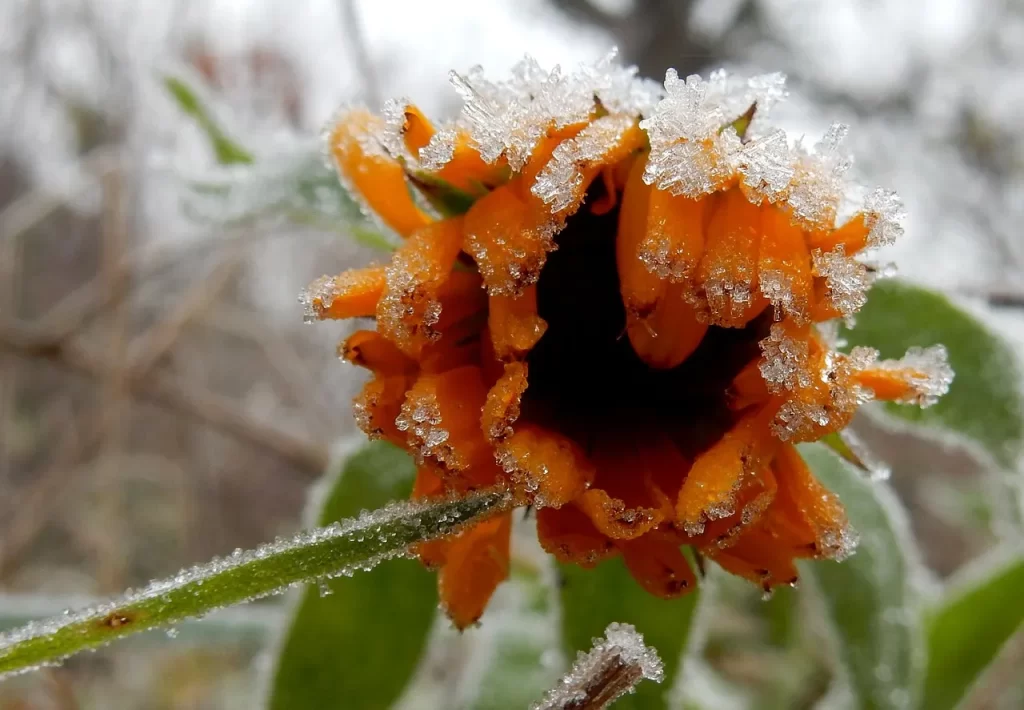
Throughout the winter, it’s essential to monitor the moisture levels of the soil. While the plants are dormant, they still require some water to survive, but overwatering should be avoided to prevent root rot. Be sure to water sparingly, allowing the soil to slightly dry out between waterings. Finally, keep an eye out for any signs of pests or diseases and take necessary action to prevent their spread. By following these tips and providing proper care during the winter months, you can increase the chances of successfully overwintering your calendula plants and enjoy their vibrant blooms once again in the coming spring.
Troubleshooting Common Calendula Issues: Solutions for Balcony Gardeners
Troubleshooting common calendula issues is an essential skill for balcony gardeners to ensure the health and vitality of their plants. While calendula is generally easy to grow, it can face a few challenges along the way. One common issue is powdery mildew, a fungal disease that appears as a white powdery coating on the leaves. To combat this, ensure proper air circulation around the plants by spacing them adequately and avoiding overcrowding. Additionally, avoid overhead watering and instead water at the base of the plants to keep the foliage dry. Another issue to watch out for is aphids, small insects that can infest calendula plants and cause damage. In case of an aphid infestation, you can use organic insecticidal soaps or a strong spray of water to remove them from the plants. It’s also important to regularly inspect your calendula plants for signs of pests or diseases, as early detection can prevent the issues from spreading. Proper hygiene, such as removing dead or diseased plant material, is crucial in maintaining a healthy growing environment. Lastly, nutrient deficiencies may occur, leading to stunted growth or yellowing leaves. To address this, provide balanced fertilizers specifically formulated for flowering plants and follow the recommended application rates. By promptly identifying and addressing these common issues, you can troubleshoot problems effectively and ensure your balcony-grown calendula plants thrive and flourish.
Showcasing Your Balcony Calendula Garden: Styling and Photography Tips
Showcasing your balcony calendula garden through styling and photography is a wonderful way to capture the beauty and essence of your plants. When it comes to styling, consider creating an appealing backdrop by arranging your calendula plants in complementary colors and textures. Incorporate other elements such as decorative pots, trellises, or hanging baskets to add visual interest and depth to your garden composition. Pay attention to the overall composition and balance of your garden, ensuring that each plant has enough space to shine while still creating a harmonious display. When it’s time to photograph your garden, take advantage of natural light by shooting during the golden hours of early morning or late afternoon when the sunlight is soft and warm. Experiment with different angles and perspectives to capture unique and captivating shots. Close-up shots of the vibrant calendula blooms can highlight their intricate details, while wider shots can showcase the overall garden arrangement. Consider using props like gardening tools or vintage accessories to enhance the storytelling aspect of your photographs. Don’t be afraid to get creative and try different techniques, such as capturing the gentle movement of petals or capturing the interaction between bees and the flowers. Lastly, editing can add the finishing touches to your photographs. Enhance the colors, adjust the exposure, and fine-tune the composition to bring out the best in your images. By paying attention to styling and photography, you can showcase your balcony calendula garden in a visually stunning way, capturing its beauty and sharing it with others.
Conclusion
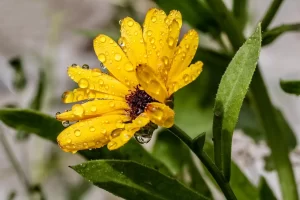
In conclusion, growing calendula plants on your balcony can be a rewarding and fulfilling experience, allowing you to enjoy the beauty and numerous benefits of this versatile flower. By following the tips and tricks shared in this blog post, you can create a thriving balcony garden filled with vibrant calendula flowers. From understanding the ideal growing conditions and preparing the balcony for planting, to ensuring proper sunlight, watering, and fertilizing techniques, each step plays a crucial role in the success of your calendula garden. We have explored the various uses of calendula, from its skincare benefits in creams, oils, and teas to its healing properties for skin conditions like acne, wounds, and eczema. Furthermore, we discussed the value of companion planting, pest management, and pruning techniques for continuous blooms. Harvesting and preserving the calendula flowers allow you to enjoy their beauty and create DIY beauty products, while overwintering and troubleshooting common issues ensure the longevity and health of your plants. Lastly, we touched upon the importance of styling and photography to showcase your balcony calendula garden in all its glory. By implementing these tips and tricks, you can create a stunning and flourishing balcony garden filled with the goodness of calendula. So, roll up your sleeves, gather your gardening tools, and embark on this wonderful journey of growing calendula plants on your balcony. Let the magic of calendula transform your space into a vibrant oasis, filled with the soothing beauty and numerous benefits of this remarkable flower.
#CalendulaGardening #BalconyGardenTips
